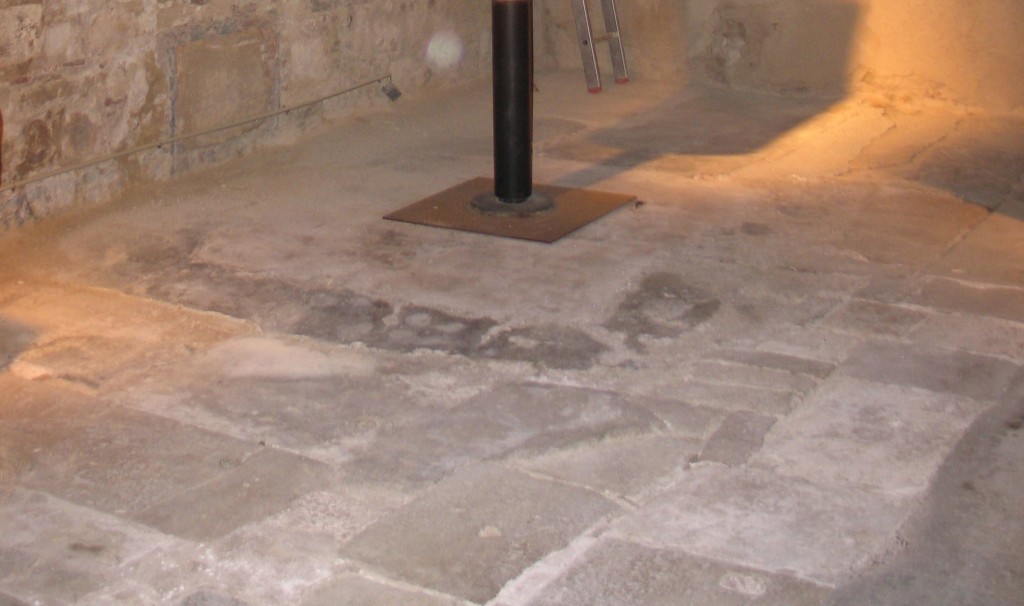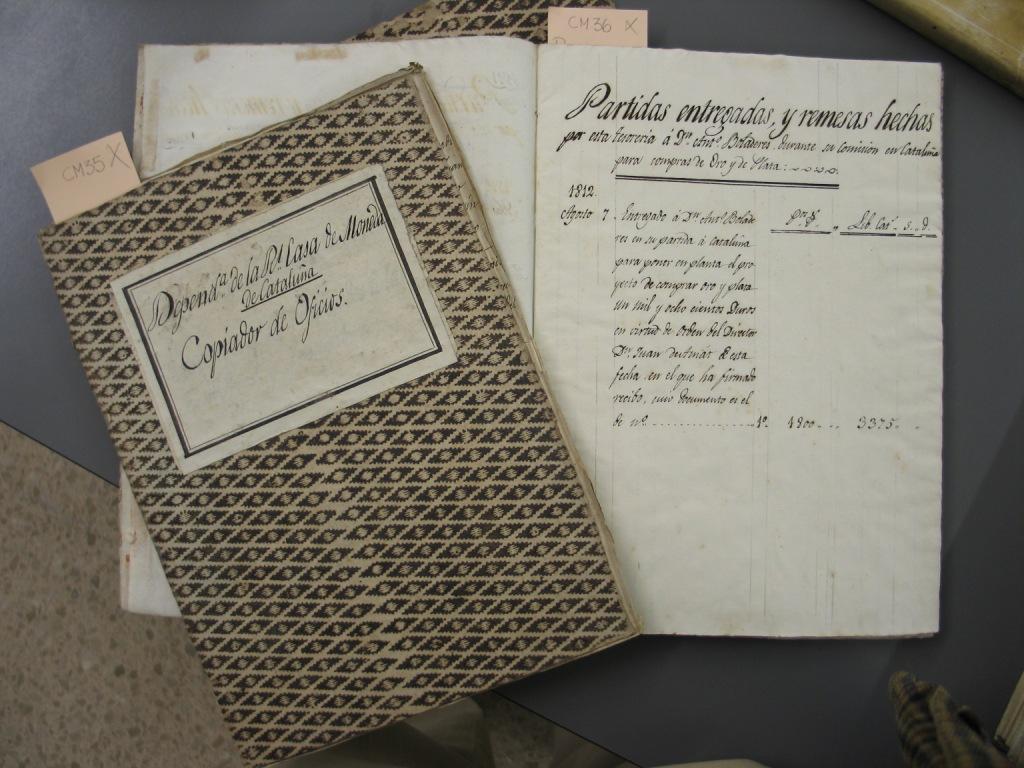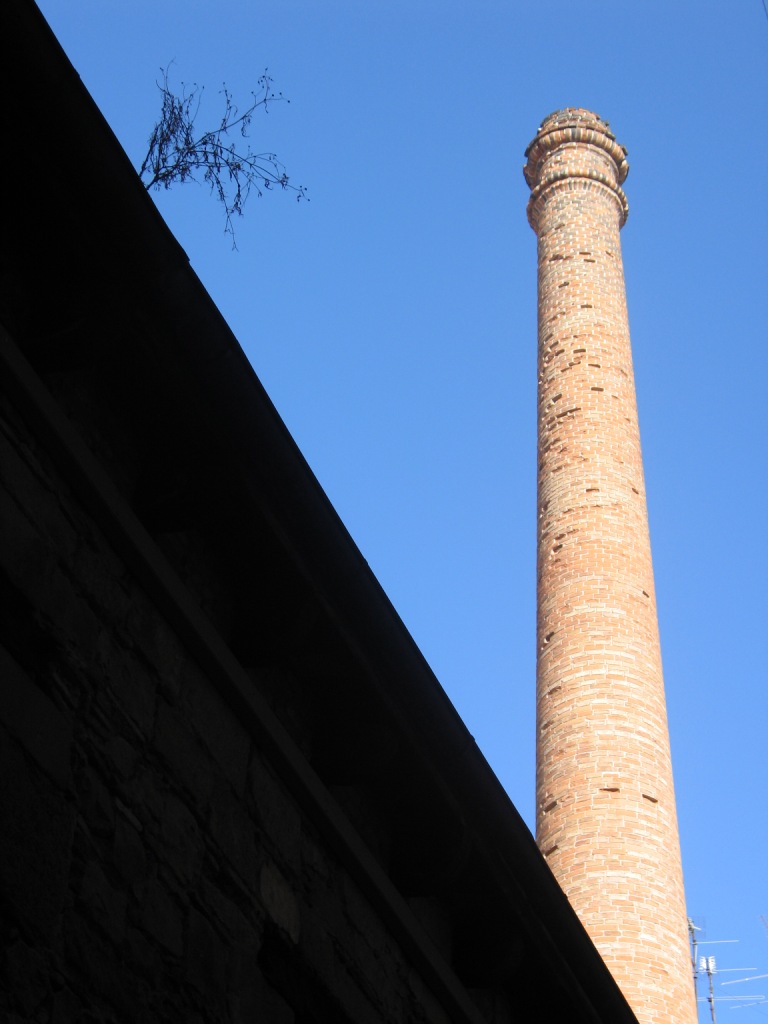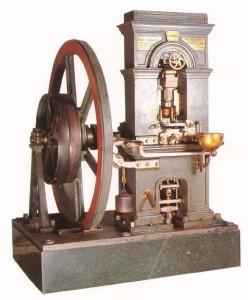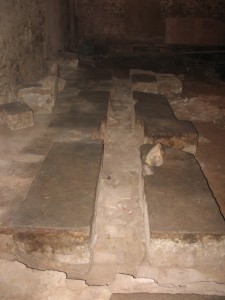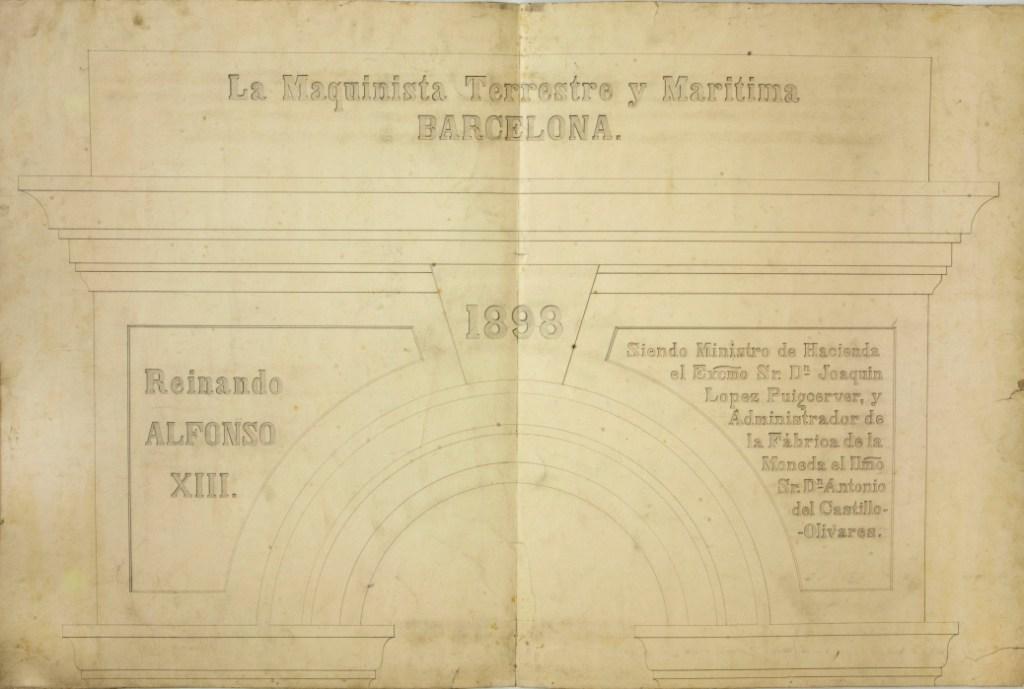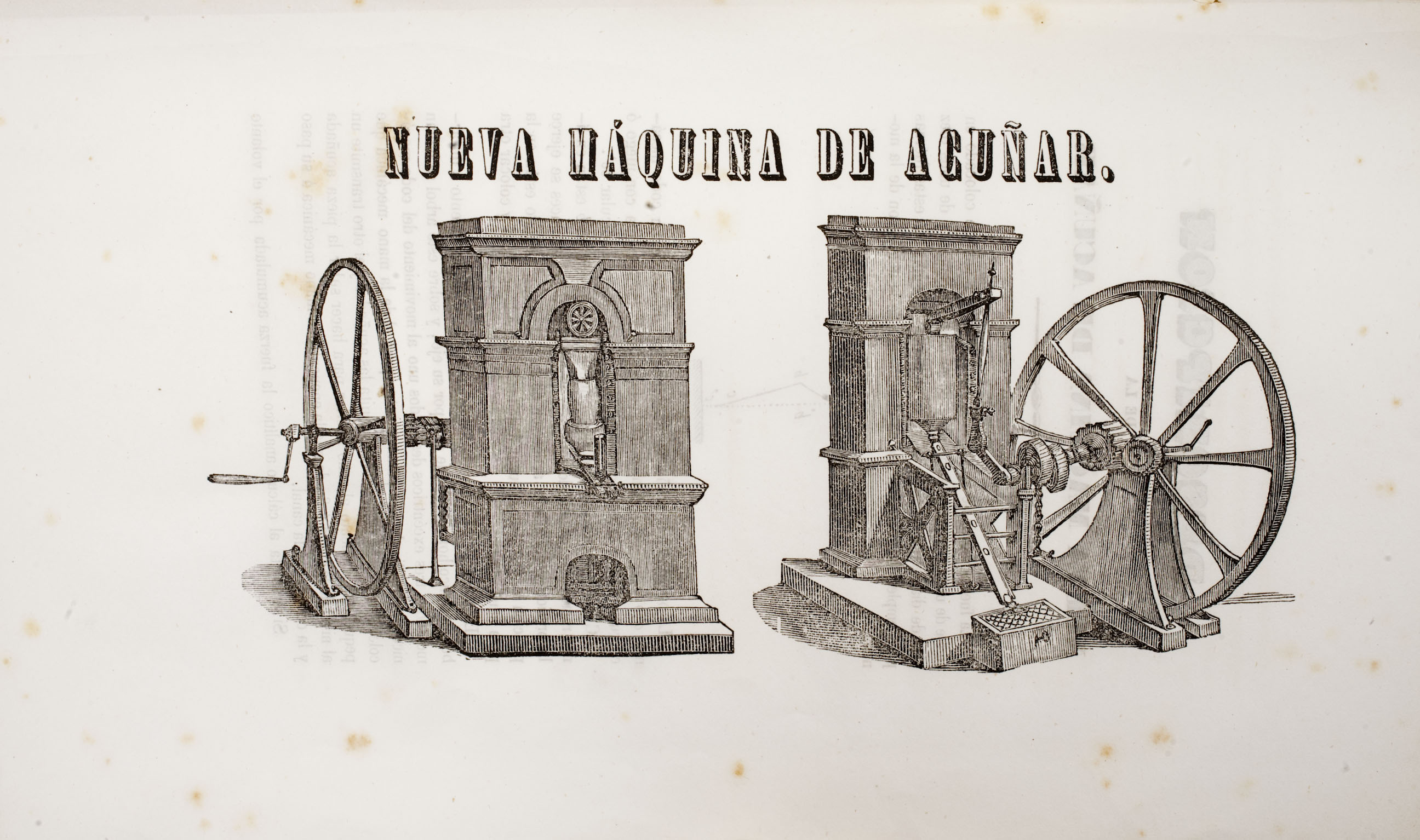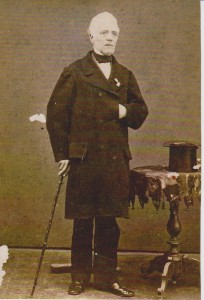In a previous article we looked at the Mint and its location in the most commercial neighbourhood of Barcelona, its implantation in the urban layout of the area and some of the coins that were made there. In this second part, we now have to imagine a steam-powered factory in the middle of the nineteenth century, with Thonnelier presses working at full capacity.
Before it was purchased by Barcelona City Council, the site now excavated in Carrer de la Seca was occupied by a sculptor’s studio and before that by warehouses that did not fundamentally alter the way the building had looked when it ceased to be a mint. I remember the first visit I made there perfectly and what most caught my eye, after the spacious feel of the industrial premises – due to the austere look of the walls, made of rubblework masonry, and the bare brick pillars – was the floor, a magnificent mosaic of flagstones, traces of where machinery had once been nailed to the floor, and paving stones that helped to produce a level floor. It was a jigsaw puzzle that insinuated much more.
For someone who had devoted many years of study and hard work to learning about the history of the Royal Mint of Barcelona it was one of those experiences that are not forgotten and which make research exciting. It is one thing to read the documents, another thing to weigh up the coins and yet another to walk among the stones. I was in that legendary place where the coinage of Barcelona had been minted, and to which the documentation referred in the form of receipts, regulations and plans from its archive, currently dispersed between the Archive of the Crown of Aragon, the Archive of the Diputació of Barcelona (provincial government), the Library of Catalonia and the Universitat Autònoma de Barcelona’s Carandell Economic Library (partially digitized).
I even thought I could hear the noise of the machines, evoked in the cançó de la seca immortalized by Santiago Rusiñol (1861-1931), a resident of the neighbourhood, in l’Auca del senyor Esteve when he mentions the tinkling of newly minted coins that could be heard as one approached the factory.
La Seca, a site associated with steam power
The archaeologists have recovered part of the steam-powered mint in and around 1856. This was, therefore, the mint’s last period. Doing an archaeological excavation means also destroying the record of the site after documenting it. It has been said, often very dramatically, that excavating is like reading a book while burning the pages. To continuing excavating, uncovering the lower levels and going further back in time would also involve losing what has now appeared, the most recent layers, but no less interesting for that. Therefore, the decision has been made not to dismantle what has been found and not to continue digging down.
Up to now we have been able to see the extraordinary 30-metre tall chimney that, thanks to the documents conserved in the Museu Nacional, has been dated to 1858 when, after a fire and neighbours’ complaints, it was built. Now we also have an underground coal bunker (still full of coal ready to be shovelled into the boiler), the remains of a kiln, the magnificent stone bases of at least six minting presses that we can attribute to the Thonnelier model, besides pipes and other bases of associated machinery, which will have to be studied carefully in order to reconstruct the machine room of La Seca.
The uncertain fate of the Thonnelier presses from the Barcelona Mint
There is a Thonnelier press conserved in the Museo de la Fábrica de Moneda de Madrid It is not just any old machine, but a press that proudly displays brass nameplates saying that it is “LA PRIMERA” (The first) made in “1856” at the “MAQUINISTA TERRESTRE Y MARÍTIMA” “PARA ACUÑAR MONEDA POR MEDIO DEL VAPOR” (to mint coinage using steam power). Moreover, it says that it was manufactured when Francesc Paradaltas i Pintó (1808-1887) was the superintendente – that is, the director – of the mint, and we know that in that year he was the director of the Barcelona Mint. There can thus be no doubt that the machine comes from our mint. We also know that La Maquinista attached this type of nameplate at the time the machines were manufactured, thus individualizing every one. I point this out because the fact that the machine is conserved in Madrid has led to other interpretations being made.
The Museu Nacional also conserves an important collection of plans deposited by La Maquinista Terrestre y Marítima that correspond to the original construction diagrams for this type of Thonnelier press.
The development of the technology linked to the minting of coinage and the figure of Francesc Paradaltas
The remains that the archaeologists, under the direction of Anna Bordas, have unearthed are just a small part of the story of technological development in the minting of coinage. This has its high points, on which I shall not dwell, such as the introduction of rolling mills from 1610 onwards in the Barcelona of Cervantes’ day, the construction of a fly press and of a screw press in 1707 at the height of the War of the Spanish Succession, the introduction of screw presses in 1808 during the Peninsular War, and the introduction of Thonnelier presses – worked by hand in 1840 and then steam powered in 1856.
This last industrial – but also political and economic – adventure undertaken by the Diputació (provincial government) of Barcelona would not have been possible without the enterprising nature and obstinacy of Francesc Paradaltas, who introduced the latest developments to Barcelona, thus making the establishment a pioneer of steam-powered machinery. Some of his personal papers are conserved in the Museu Nacional. I feel it is necessary to honour the memory of this notable figure, unjustly forgotten, by naming the space of La Seca – now under restoration, and which he helped shape – after him.
The Barcelona mint was closed in 1881 by order of the government; however, and this is the subject of another article, coinage, albeit counterfeit, did continue to be minted in some places in the city.
Related links
Revolució industrial i producció monetària. La seca de Barcelona i el seu context, Albert Estrada-Rius (ed.), Barcelona, 2013
Gabinet Numismàtic de Catalunya

